SearchEye Launches Pro Membership
Flat Price Mentions, Digital PR, Exclusive Opportunities, access to 5,000+ opportunities.
Time and Poor Quality Responses
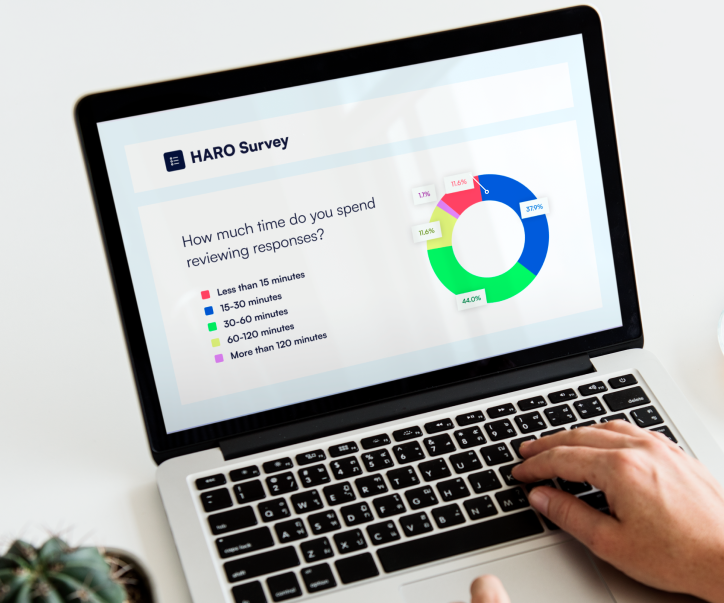
HARO is a popular platform that connects writers and sources for media-mention opportunities. Writers and journalists post queries describing the type of expertise they are seeking. Bloggers, business owners, and subject matter experts respond with pitches, hoping to get a media mention.
How well does HARO work for writers and journalists seeking sources, and what do they like or dislike about the service? To learn more, Searcheye surveyed journalists and writers. Our ultimate goal is to learn what journalists want in a platform that connects writers, publishers and brands to continue to create a truly valuable alternative.
Here, we’ll share responses to the survey questions as well as additional insights we received from writers who expanded on their experiences in a follow up questionnaire.
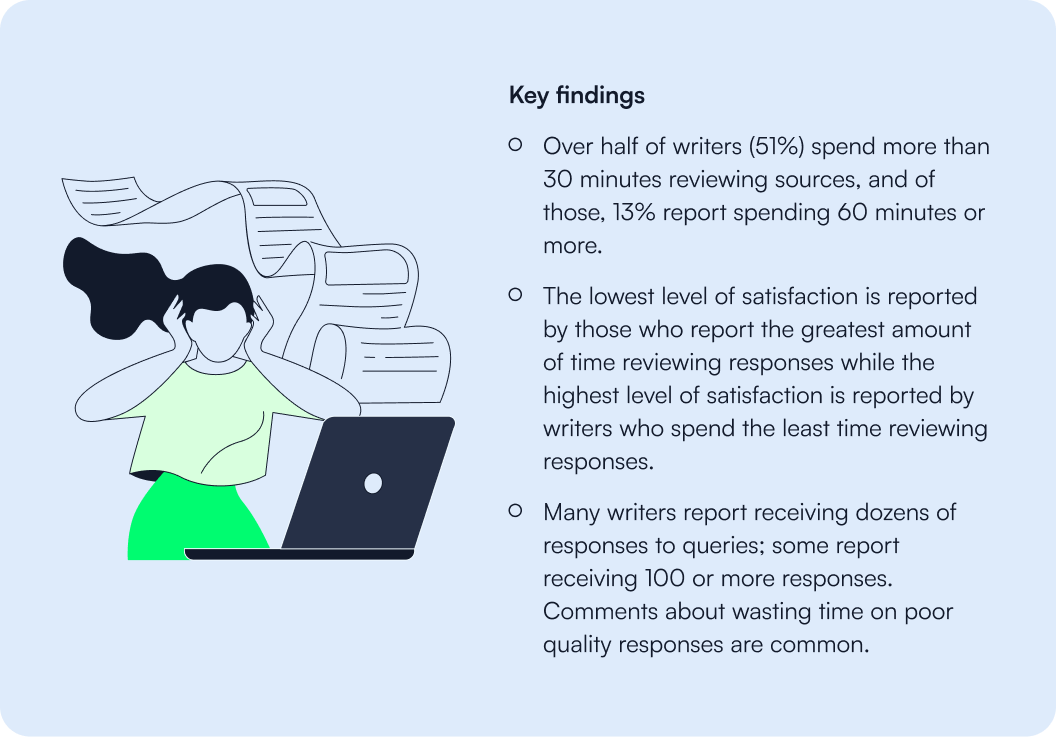
Most of the 101 writers who completed our survey said they cover a number of different topics/industries. Though a few specialized, most cover multiple beats.
Lifestyle, business and tech were the most common ones mentioned, as illustrated in this word cloud illustration of responses.
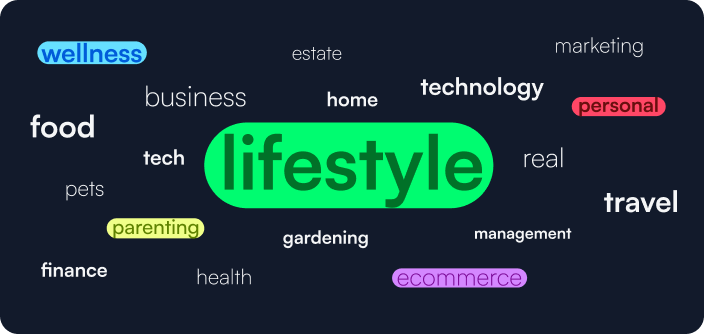
We asked, “How many articles do you get published per month?” Twenty-three writers indicated they generally write 5 or few articles per month. The other 75% of respondents write more than 5 articles per month, with many stating they often write 10, 20 or 30 or more articles per month.
At the high end, one writer said they have 120 articles published per month, another said 115, and still another reported 100-120 of their articles are published each month.
When asked to rate their experience with HARO, just over one quarter (29%) report “it’s okay” and about 7% are either unsatisfied or very unsatisfied. 39% report they are satisfied while a quarter of respondents best identified with the statement, “I’m very happy to use HARO for my articles.”
When asked to subsequently elaborate on what they did not like about HARO, most commented on poor quality responses.
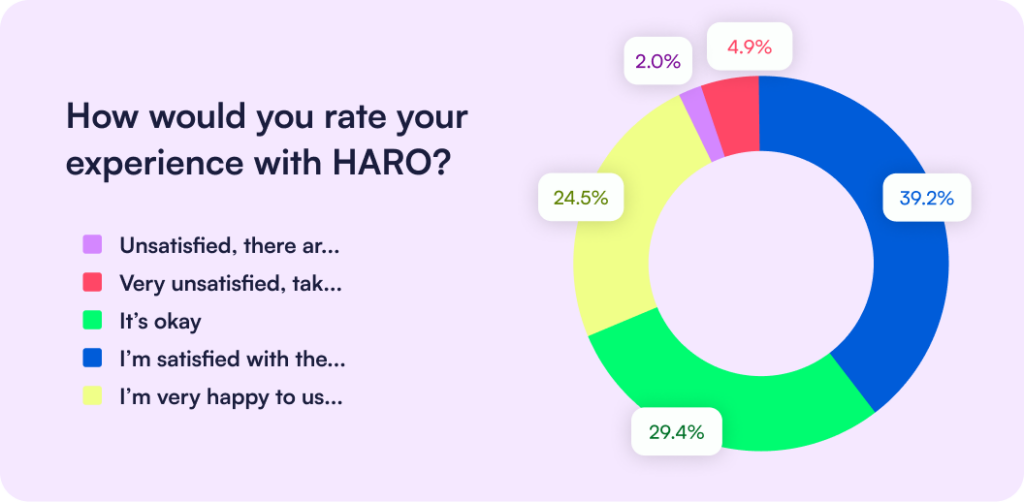
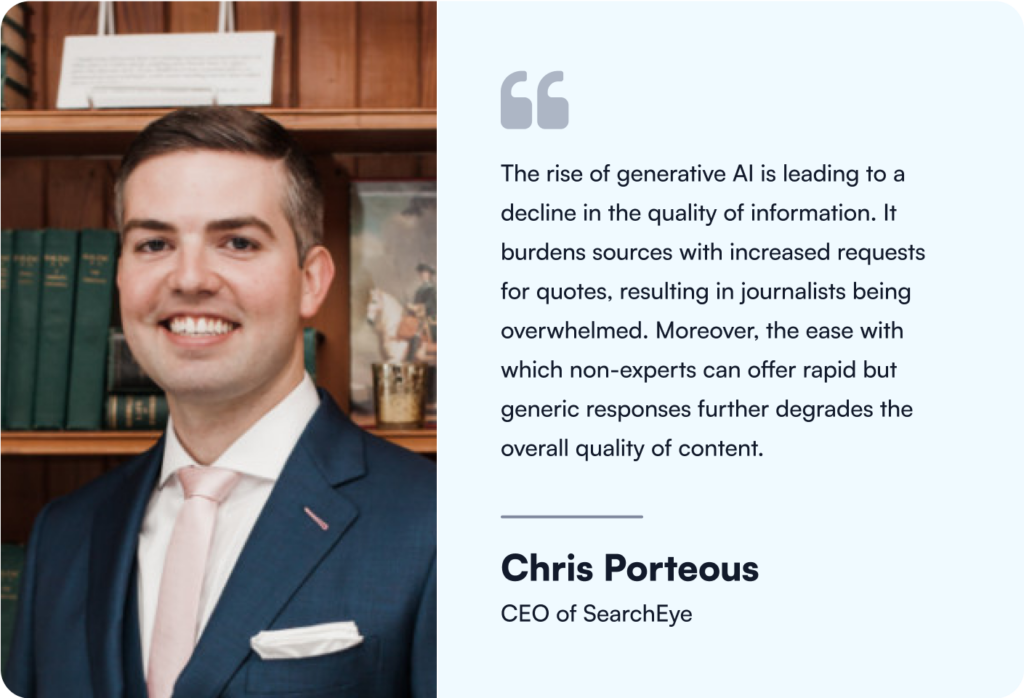
Journalists and writers reported a wide range in the number of pitches received in response to queries. 30% of writers responded with a range that totalled 10 or less; for example 4-6 or 5-10 pitches.
Many said the number of responses they get to queries can vary dramatically. Here are some of those responses:
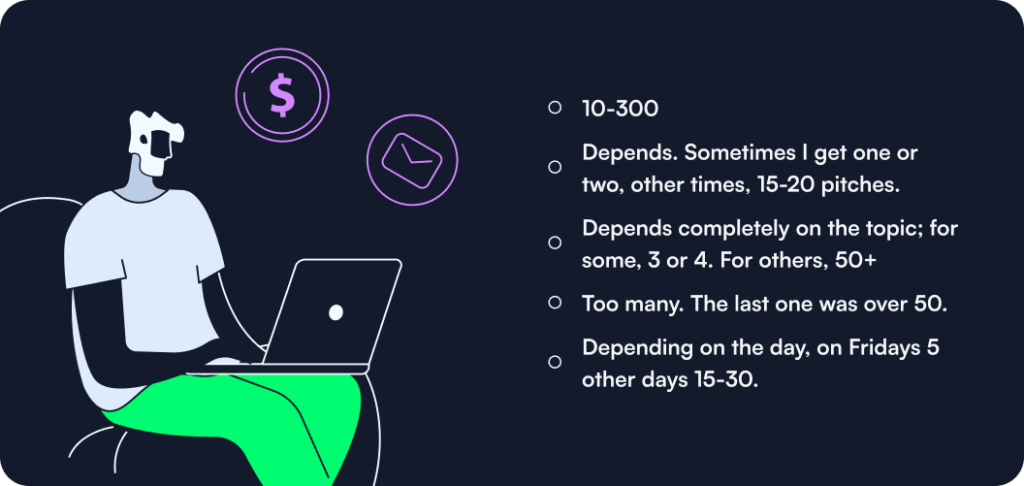
An equal percentage of writers (37%) spend 15-30 minutes reviewing pitches, or 30-60 minutes reviewing pitches. Nearly 13% spend one to two hours on that task.
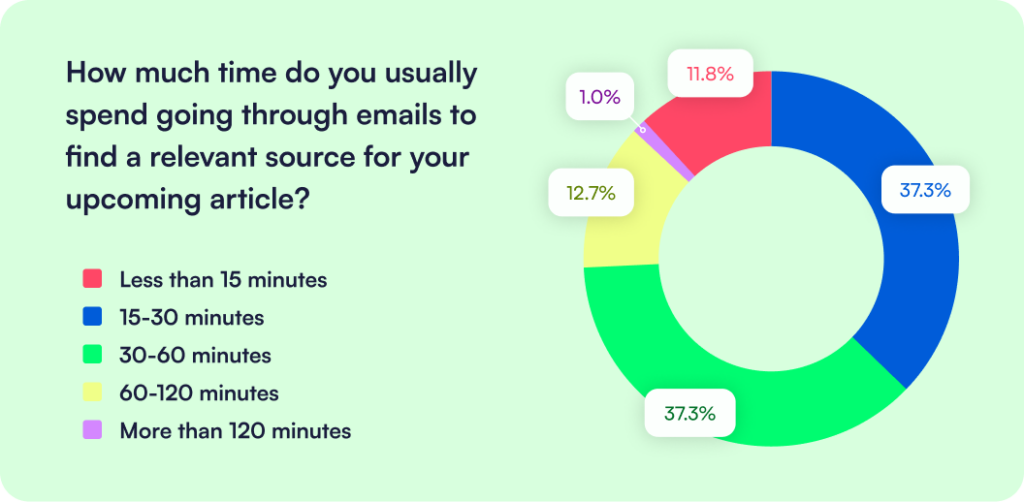
In follow up, we heard from writers that they also often spend time verifying the credentials of the sources they quote. This is in addition to reviewing responses for relevant quotes and insights.
There appears to be a strong relationship between time spent reviewing responses and satisfaction with the service.
Those who report being unsatisfied or very unsatisfied with HARO tend to spend more time reviewing pitches (responses) from sources. More than half of those who said they were “unsatisfied” or “very unsatisfied” spent 30 minutes or more on this task, with 28% reporting they typically spend 60 minutes or longer reviewing responses.
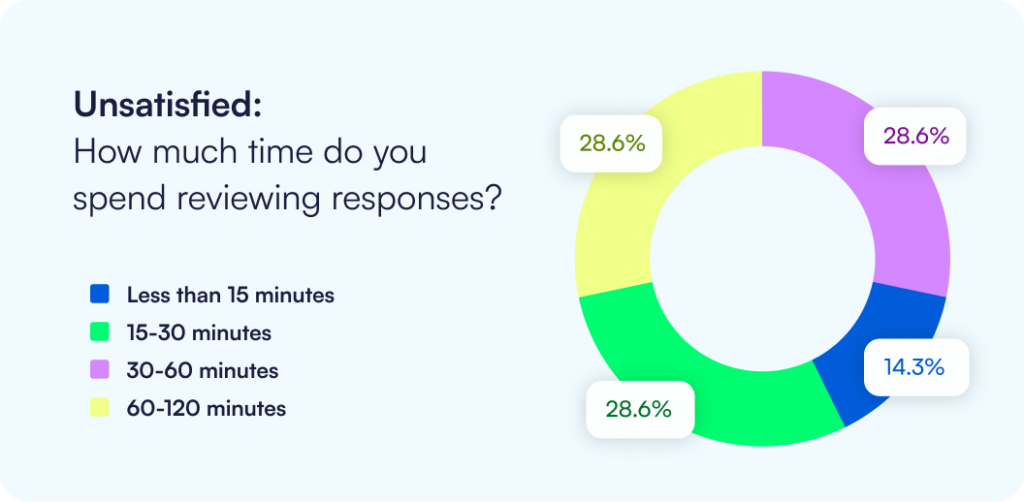
By comparison, those who report being satisfied (“it’s OK, “I’m satisfied with the responses I get,” or “I’m very happy with the results I get”) are less likely to spend a large amount of time reviewing pitches.
Almost 52% of these respondents said they spend 30 minutes or less on this task, and 12% spend less than 15 minutes reviewing responses.
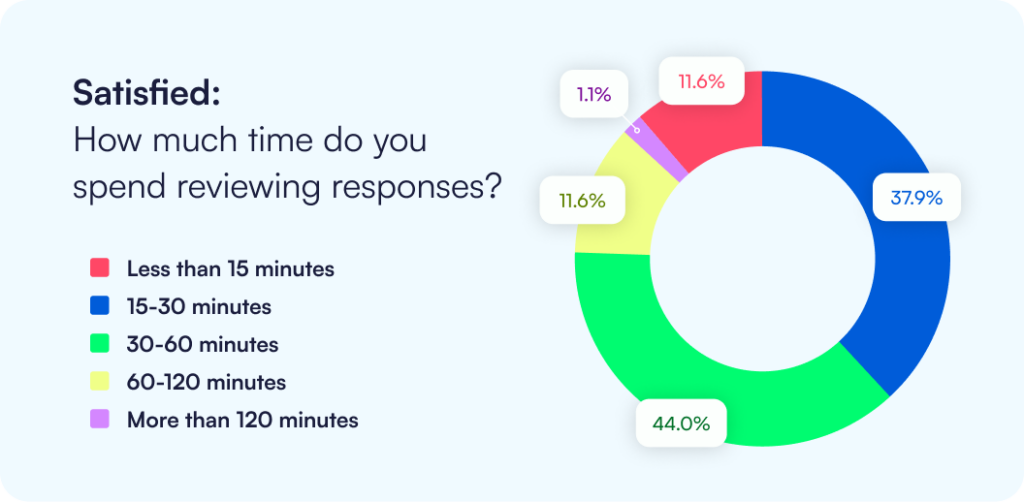
Those who said they were “very happy to use HARO” spend the least amount of time reviewing responses. 56% said they spend 30 minutes or less reviewing responses, and 12% spend less than 15 minutes on this task.
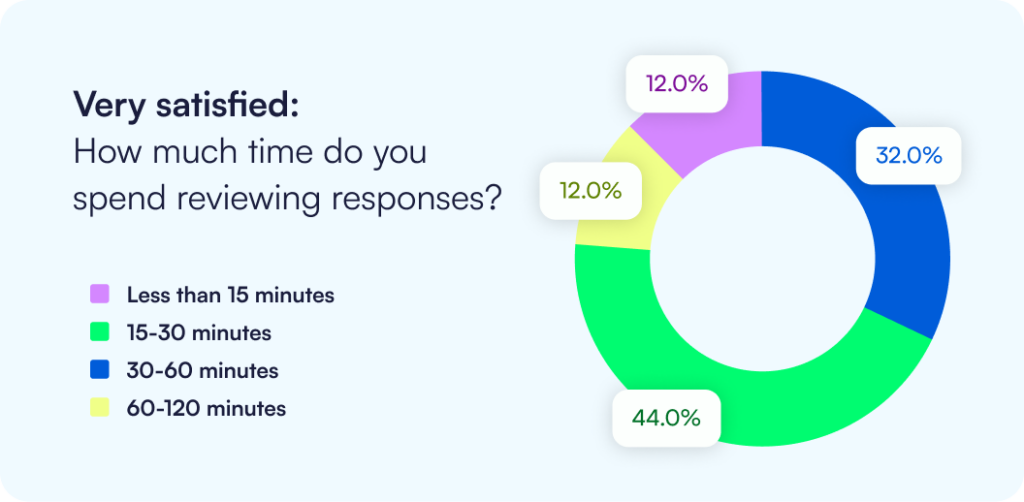
Sources using HARO may include subject matter experts, authors, bloggers, influencers or PR representatives working on behalf of these types of clients. Sources often hope to secure a link to their website to increase the visibility of their online presence in web searches.
Only three survey respondents said they are not able to include links to sources in their stories. For the rest of the writers who responded, the number of links they include in articles varies widely depending on the type of story and the number of responses received.
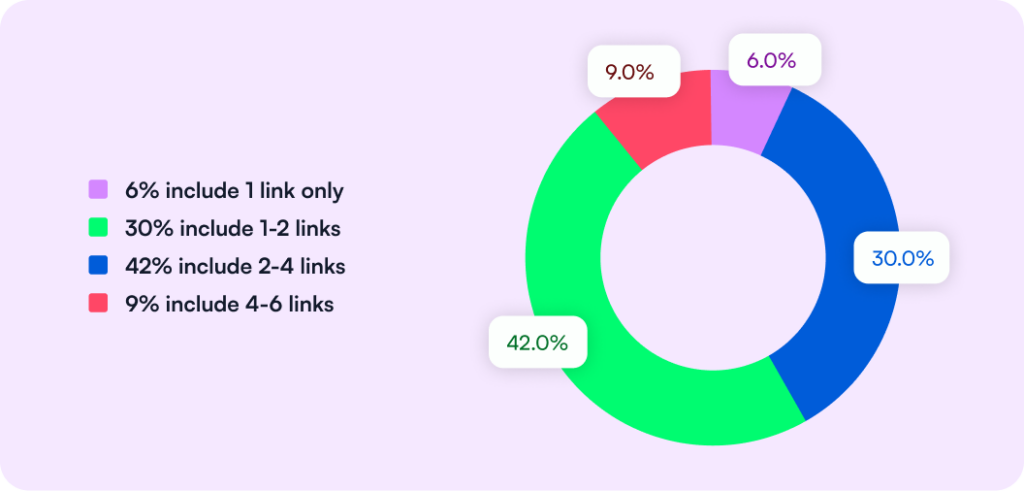
And a few mentioned they may include more links in certain stories:
It’s worth noting that while sources often submit responses hoping to get backlinks, they cannot insist on them. HARO rules prohibit sources from requiring links when quoted. Specifically, those rules state:
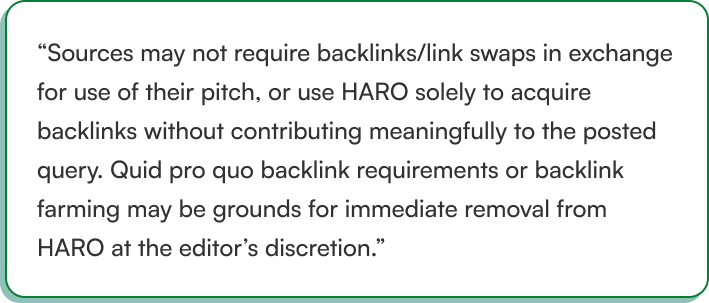
Journalists and writers looking for sources to quote in articles they are writing often turn to platforms like Help A Reporter Out (HARO) to connect with potential sources.
HARO states on its site that it “reaches more than 1 million sources and 75,000 journalists and bloggers, making it a vital tool for brands and reporters alike.” Users fall into one of two broad roles:

Journalists can submit queries for free, as long as they abide by HARO’s journalist rules for those queries.
Individuals and companies looking for opportunities to be quoted by the media can also use HARO for free, or pay a monthly fee for additional access.
HARO is rebranding as Connectively, and the new pricing is listed as follows:
Sources with a free account can pitch up to 5 times per month, while those with a core plan can pitch up to 15 times per month. Sources can buy more pitches in quantities of 1, 6, or 15.
HARO is owned by Cision, a global leader in PR and marketing communications technology and intelligence.
We reached out to journalists and writers who responded to our survey for more insight into their experiences with HARO.
For many, HARO is a mixed bag when it comes to pitches. While they may get some great responses, sorting through all of them can be time-consuming.
Melanie Allen, a journalist who writes for Partners in Fire, appreciates many of the responses she’s received. “A lot of professional people with a wealth of experience respond to queries on HARO,” she notes. “I’ve gotten expert quotes from medical professionals, historians, and psychologists that I wouldn’t be able to find anywhere else. “
At the same time, she gets responses that are unqualified and a waste of time. “There’s a lot of spam,” she observes. “I’ll request specific credentials, and a lot of responses will be from people who don’t have any background or experience in the topic and are just looking for a link.”
Jon Morgan, CEO of Venture Smarter, loves the “speed and diversity” of responses he receives.
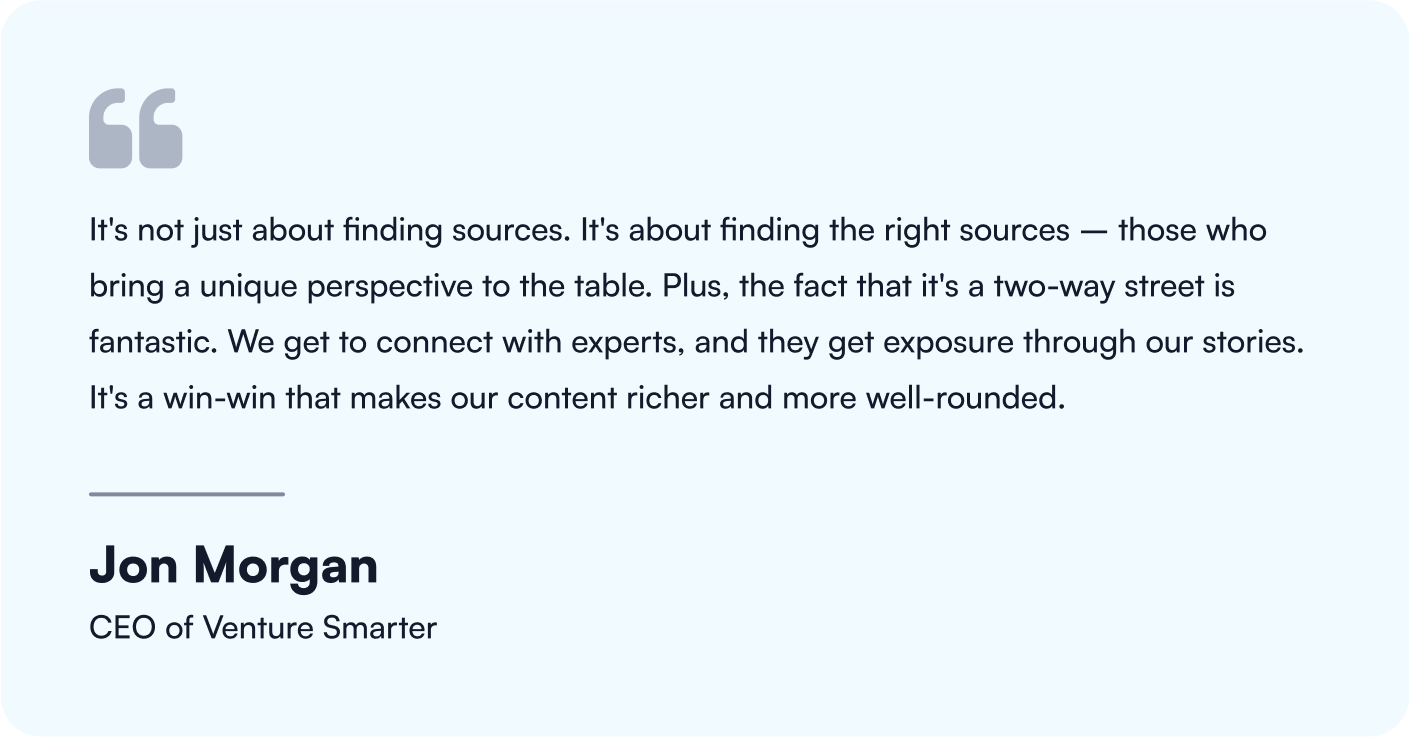
But he also recognizes the shortcomings.”It’s fantastic to have so many potential sources at your fingertips, but sifting through them to find the right fit for a particular story can be like finding a needle in a haystack. Sometimes, you get flooded with pitches that don’t quite align with what you’re looking for, and it can take a significant amount of time to filter through them all.”
The quality of responses can vary tremendously.
“Many responses are spammy or unqualified,” observes John Paul Hernandez, a B2B/ SaaS freelance writer. “For every 50 responses that come in my inbox, I might get one qualified answer. Of course, it’s worth it when you find the right person.” He finds that some respondents ignore clearly spelled out requirements in the hopes of landing a mention.
As a result, Hernandez sometimes goes outside the platform to find sources. “I like HARO,” he notes, “but it needs some improvement on qualifications.”
Bhavya Aggarwal is a writer at Gartner Digital Markets. He says he loves how HARO lets him connect with small business owners who are “excited to share their personal stories, and business knowledge.”
But he’s been getting “a lot of AI-generated pitches from ChatGPT just to get easy backlinks. Sifting through so many spammy queries eats so much time.” He’s becoming more intentional about stating in his query that he doesn’t want to receive AI-generated responses.
Rob Swystun, independent content marketing strategist and writer, finds that he tends to get responses from PR professionals offering to connect him to their client, “rather than just getting their client to answer the question.” However, he doesn’t find it takes a lot of time to pick a source to include.
Amna Muqeem is a writer but he’s also a baking enthusiast and home cook who responds to queries in the food and kitchen niche. He notes that spammy queries can come from writers, too. “HARO is not good at filtering out fake queries. Many writers pose as writers from bigger publications which is ethically wrong.”
We asked writers how they choose from so many sources.
“I vet sources by looking at bios, credentials, and if they answered my questions in a useful way,” responded Caroline Lubinsky, Senior Shopping Editor for Family Handyman.
Hernandez approaches it this way:
“First, I make sure the person is qualified. Are they notable online? Do they have a job title or work for a company that gives them credibility? Or did they produce results that give them authority in the field?
Then, I review their response. It needs to be concise and articulated very well. Lastly, the substance needs to be valuable and fit right with my piece.
As long as I have a name, link, or a way to credit the person, then I’m ready to incorporate their input.”
Shawnna Stiver, Founder and CEO of Ampersand Copy and Content, says she chooses roughly 2-5 responses that:
“Don’t look like copy/pasted content from an existing blog, ones that include a personal angle or first-hand testimonial, and truly unique and helpful content that can support what I’m writing about. I don’t spend a lot of time vetting sources but do look for websites that look legitimate.”
McKayla Girardin, a writer at Forage relies heavily on LinkedIn to help her vet sources. While she says she appreciates the range of responses she’s received from HARO, also spends time sifting through spam and plagiarized responses.
“Ultimately, if a source doesn’t have a LinkedIn, I’m probably not going to use them,” she explains. “It’s also important for our blog that we use sources who are located in the U.S. or have considerable experience working in the U.S., so verifying that via LinkedIn or other channels is important.”
And since the blog she writes for does not include backlinks, she says there is additional back and forth required. “I always email a source beforehand to check that their attribution is correct and that no backlinks are required, but that also adds time to the process when waiting on their response,” she adds.
Allen says, “I always check their websites if I’m asking for a credential. I like to use as many qualified respondents as I can. If someone takes the time to write a well-thought-out response to my inquiry and has the background experience I’m looking for, I’ll try to fit the quote in. That’s not always possible, as often the answers get repetitive, but I do my best.”
“Credibility is a non-negotiable factor,” Morgan insists. “We vet sources meticulously to ensure they have the expertise and authority in the subject matter. This involves checking their background, professional experience, and any previous work or contributions they’ve made in their respective fields. We want our audience to trust the information we present, so credibility is paramount.”
He also seeks diversity in terms of professional backgrounds, geographic locations and demographics. “It’s important for our content to reflect a broad spectrum of ideas and experiences,” he adds.
Lauren Lauren Anderson, Affiliate Commerce Editor at Woman’s World, appreciates that HARO gives her “access to people I wouldn’t have the time or bandwidth to find otherwise.” At the same time she finds it frustrating “when PR reps/business owners don’t read the fine print of the request or I get blanket pitches that don’t pertain to my ask at all.”
Overall, both the survey results and the additional comments provided indicate that writers have mixed feelings about HARO.
Most value the speed in which they receive responses from potential sources.Spam and irrelevant responses are a time-consuming problem, however.
If HARO switches to Connectively’s new pricing model that limits the number of free pitches each month, that may change, though it may also limit responses as sources will likely strive to be more strategic about whom they pitch.
“HARO has a great system to send out your query and get responses. If they can find a way to filter out unqualified responses, it would be 10x better and efficient,” Hernandez observes.
SearchEye is building a dynamic marketplace to facilitate seamless collaboration between brands, creators, and publishers. Tools like Searcheye’s AI Page Recommendation Engine improves and streamlines the process of bringing together brands and publishers.
Brands can quickly identify the best page to pitch for placement opportunities, along with recommended language to suggest to the writer.
Writers and publishers save time with highly relevant suggestions along with ideas for incorporating them into their article.
Do you use HARO as a source? We’d like to hear from you! We will be surveying bloggers, business owners and other subject matter experts on their experiences using HARO to get media mentions. Contact us here to get notified when that survey is open.
Searcheye sent a survey to writers and journalists in its database and received 104 responses between April 17, 2023 and June 20, 2023. We eliminated three responses. (One did not use HARO, another had only used it once, and one used it as a source.) We also reached out to journalists who agreed to share additional insights in December, 2023.
The survey was not in any way affiliated with Help A Reporter Out (HARO) or Cision.
Flat Price Mentions, Digital PR, Exclusive Opportunities, access to 5,000+ opportunities.
Writing is an art. Each writer brings a unique style when crafting their blogs. However, a blog’s structure can significantly. [Read more]
Search engine optimization (SEO) efforts require a combination of different internal adjustments and external connections and collaboration. Coordinating a successful. [Read more]
Content creation and management have grown exponentially in the past years. With the advent of AI in content generation, it’s. [Read more]
